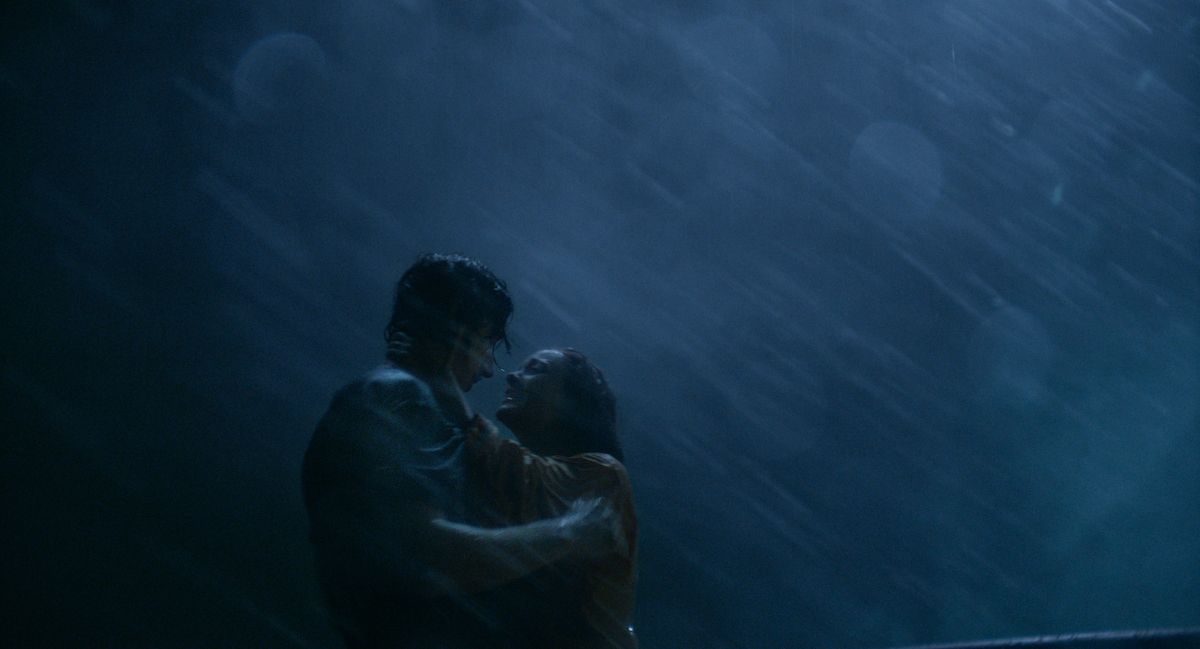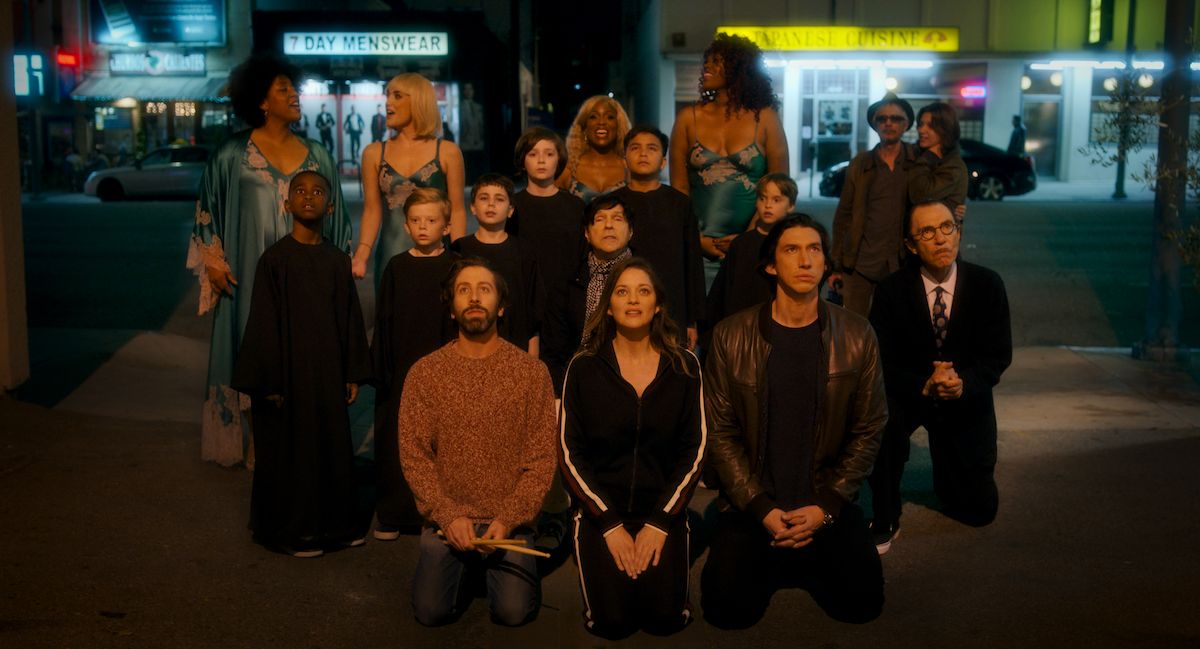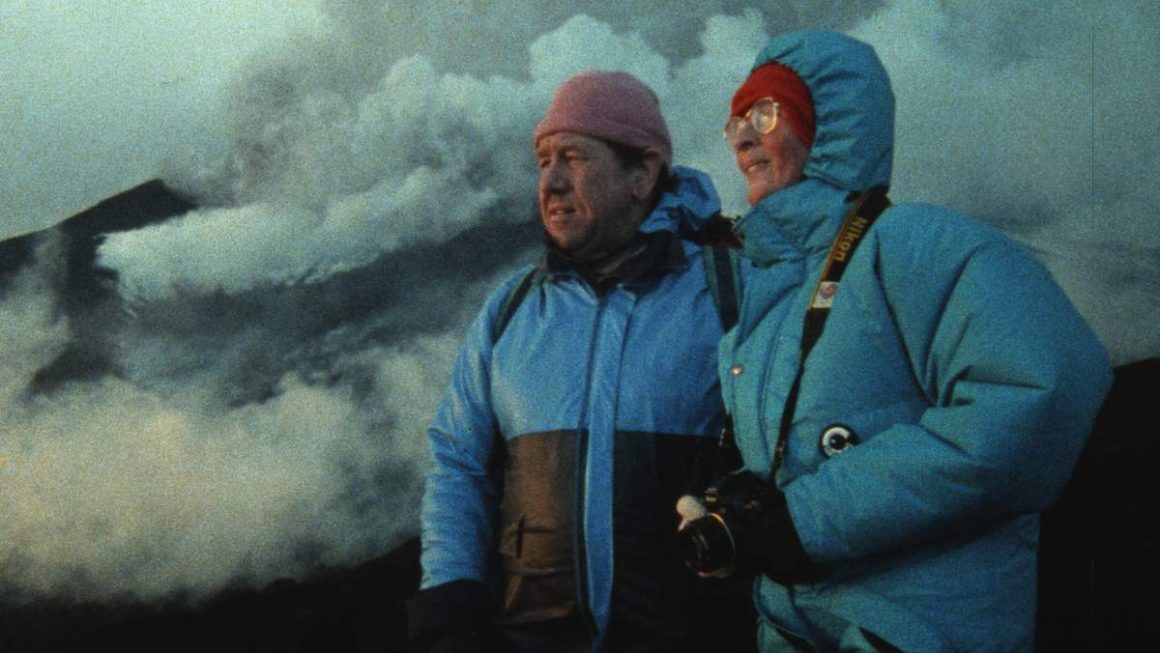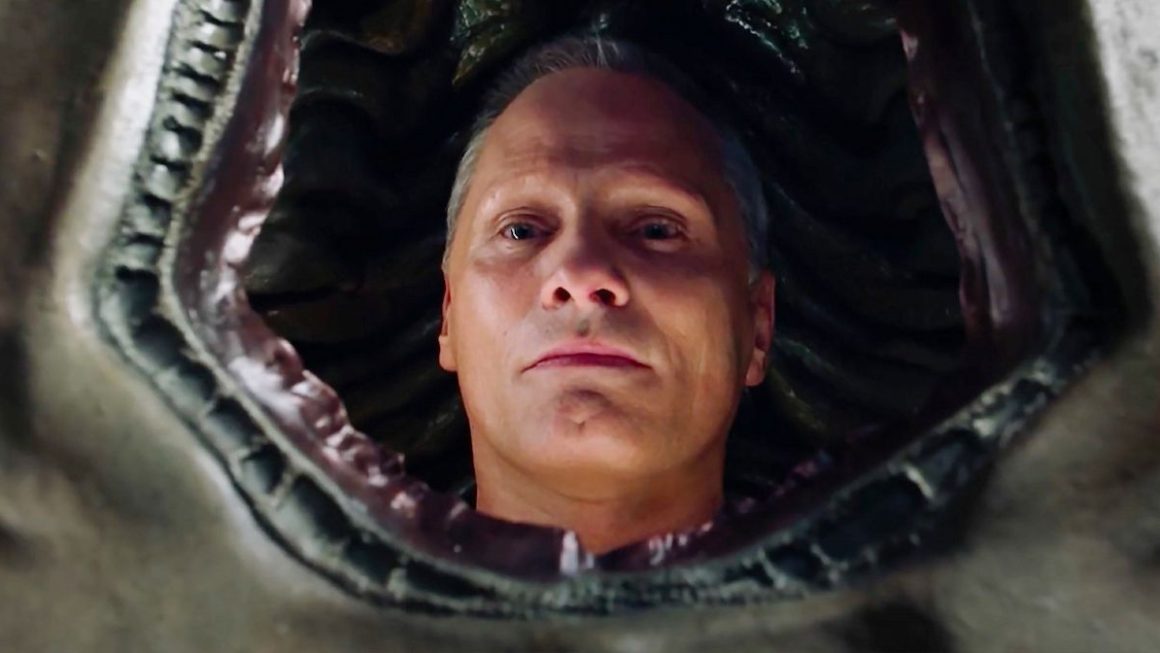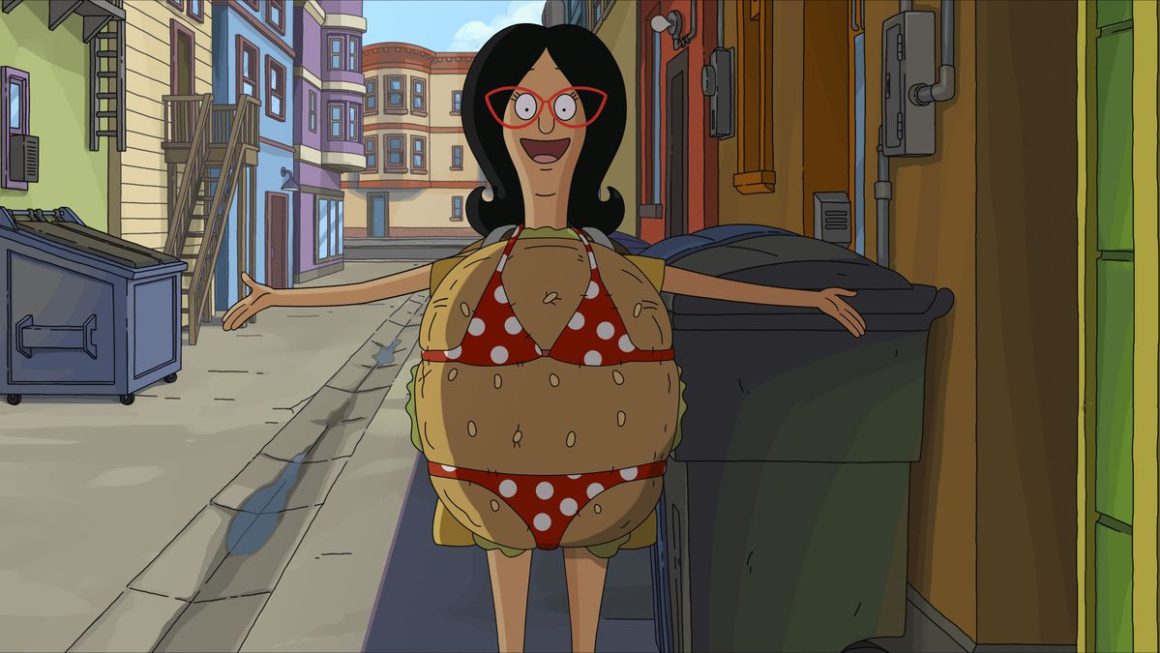Annette deploys forth an explosion of exciting innovation and creative technique, and sets a high standard in the very first sequence. Decidedly a film that contains a musical, and not a musical put on film, it’s distinct style elevates everything. The music allows for melodrama and poetry to punch through which in turn complements the story and never overwhelms the film.
For the first time in a while I was reminded about how exciting something as fresh as this can be. The excitement of the music, the swift and colorful editing choices, and the gorgeous lighting and framing blew me away.
I almost can’t decide if this piece will go on to woo the Oscar crowd or fly too low under their radar. A boy can dream. The greater point being – people deserve to know about and to see this movie.
There is genuine risk-taking here, a showcase of what cinema can be, and what it can make you feel. It certainly helps that the story centers around two rather dramatic people with dramatic careers in stand-up comedy and opera respectively. Lending to an innovative and experimental spirit that weaves the scenes of love, lust, and tragedy together seamlessly – barring one point of contention, of the transitory nature.
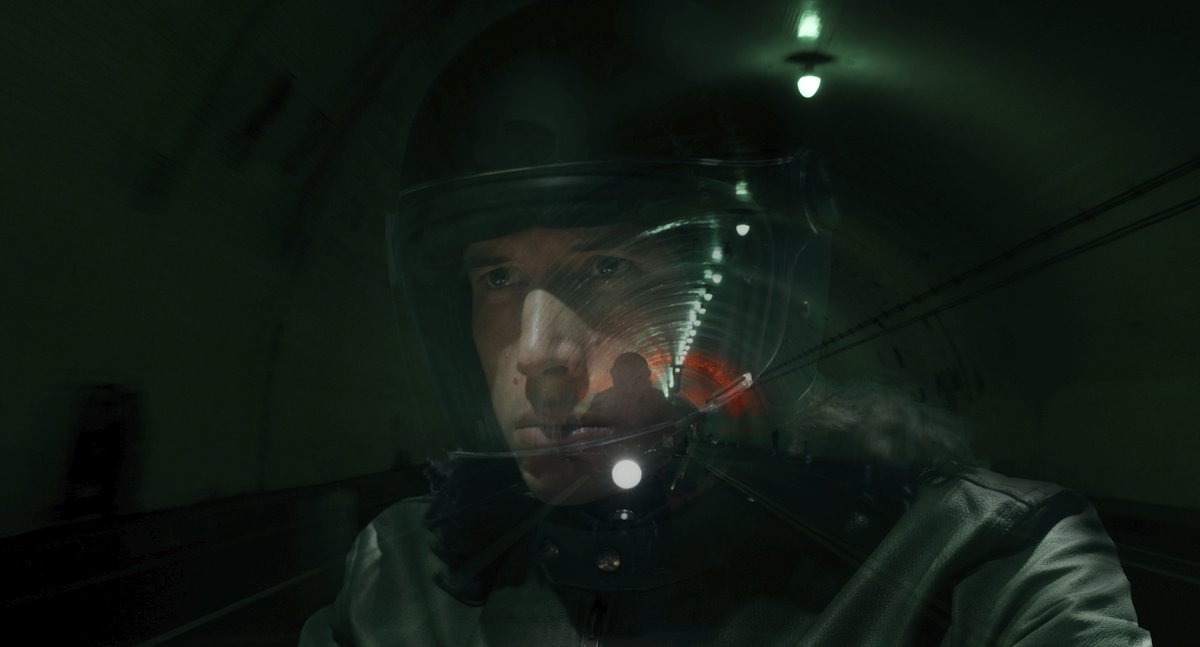
Time Structure and Transitions
The time structure maintains a playful and innovative spirit, warping the flow of time to serve the plot. Two instances in particular stand out and help shape the way one sequence dissolves into another, allowing months and eventually years to pass by effortlessly.
First though, my “point of contention.” That may be too harsh a categorization – though it must be said that the tool Carax uses at times as a segue between sequences is rather unpleasant. The use of a kitschy sort of entertainment news channel that is rather unbelievable – popped me right out of the experience of this otherwise epic rock opera.
It’s a bit too much hand-holding, when Henry (Adam Driver) and Ann’s (Marion Cotillard) marriage or Ann’s pregnancy is revealed in a news report, instead of simply allowing for events to unfold and some mystery to prevail.
On the other hand:
An argument could be made that these little “showbiz news” transitions are subversive, meant to take the viewer momentarily away from the narrative.
The purpose may very well be to call attention to just how disgusting and exploitative the entertainment news industry can be at its worst, making assumptions about performers and deciding the fate of their careers in an extremely public forum before they decide for themselves.
Regardless, the transitions aren’t very pleasing or interesting to witness.
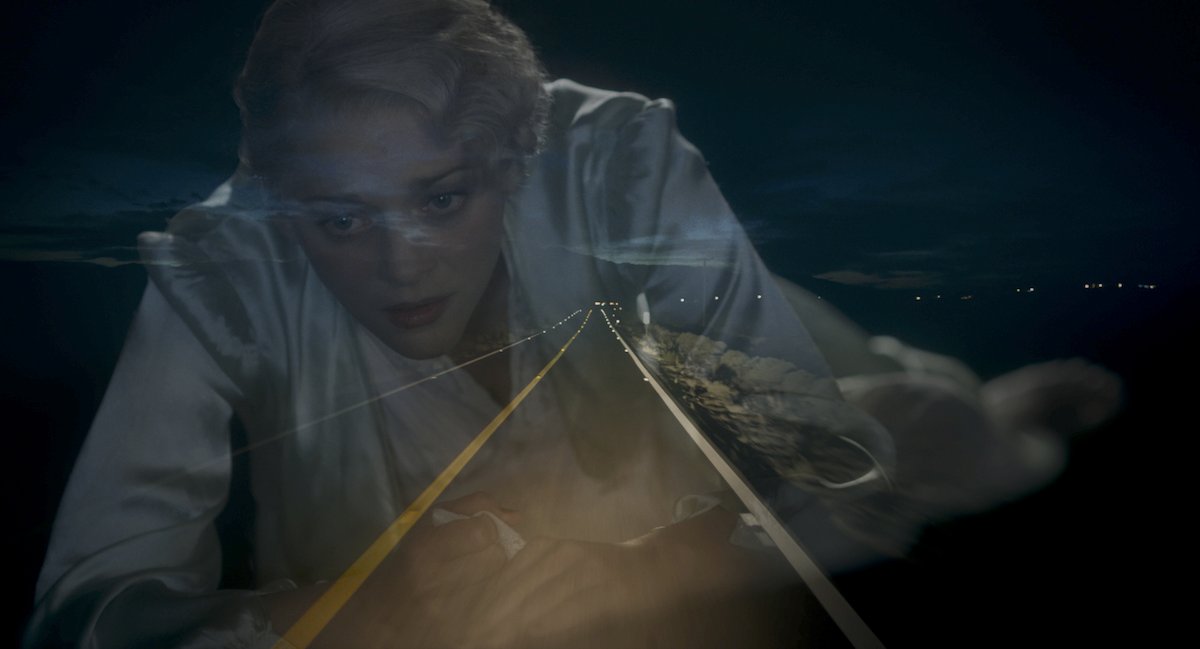
Another far more elegant solution for transition comes when Henry hops his motorbike to perform a show in Las Vegas. The warping of time with the use of successive dissolves of Ann dying over and over again in various operas overlaying his night-time ride through the mountains and the desert is visually stunning.
What’s happening at the start of this sequence and what I find to be so elegantly done, is the depiction of the rise of Ann’s operatic career in just a few moments and the foreboding signs of Henry’s declining comedy career in those same moments.
The destruction of their family is really something to marvel at.
It’s this difference in career growth and lack thereof, the envy that ensues, and Henry’s obvious anger problems that come together to end Ann’s life.
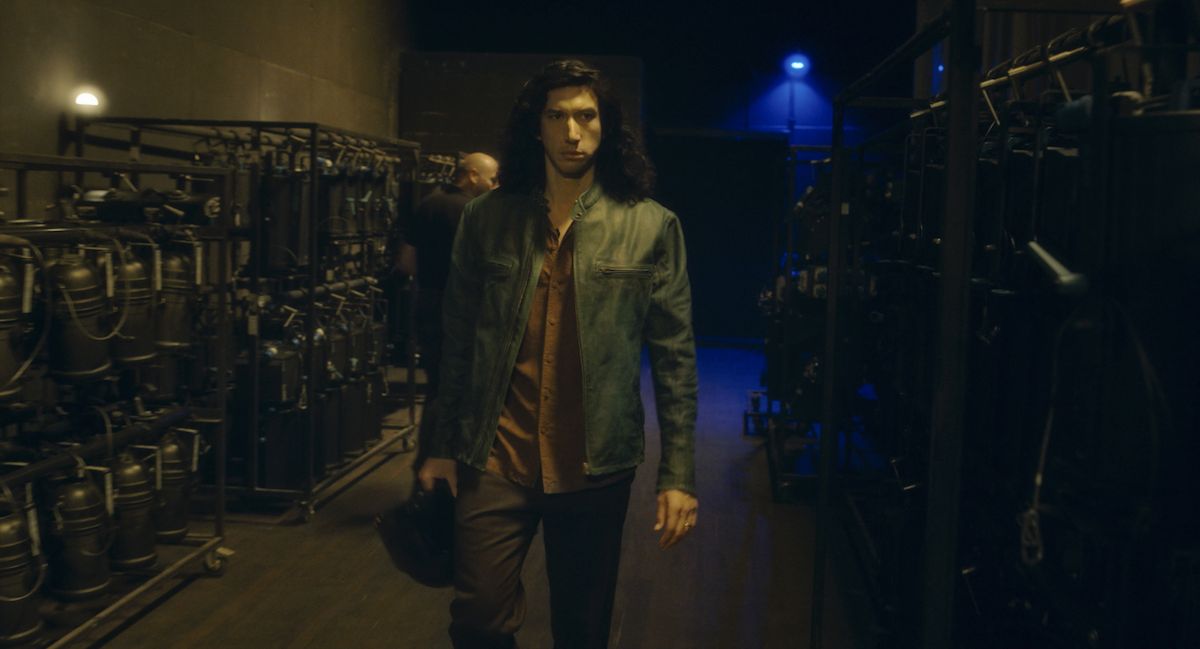
Green is for Envy
The color green pervades the entire film, following Henry in particular. In fact, the color green seems to intertwine with his very being. At his introduction he cloaks himself in a green robe for his comedy show, only to change into a green leather jacket when he’s finished.
Green is significant in Annette and can’t be dismissed. I must agree with Shakespeare on his point about the color – I too believe green represents envy and lust in this instance – for Henry especially. It envelops his environs (everything from paint to lighting) and consumes him wholly, it gives him everything and takes away everything, mercilessly.
Talk about a character flaw.
His character becomes our fixation, he leads the story to the darkest of depths, self-sabotaging and never finding satisfaction. Henry’s lust for more, for something better, for power and control, for love leads to his final downfall and imprisonment.
Henry goes to great lengths to feel something – anything. His thirst for love is insatiable. After seeing him drunkenly and inadvertently lead his wife to her death and killing The Accompanist (Simon Helberg) with dedicated purpose, I’m not sure he is truly capable of giving or receiving love.
He doesn’t seem to be so sure either – he asks himself in a lyric, amongst the writhing bodies of a nightclub, if he could ever be loved again. After a passionate affair, a marriage, and a baby, somewhere along the line, he became callous and dissatisfied.
As Henry becomes disillusioned in his life and relationship, the film unravels, reality begins to slip away, and surrealism takes over as the driving force of the plot. Many beats roll by in which I was uncertain about what might actually be happening and what might be fantasy. It puts the audience on uneasy footing.
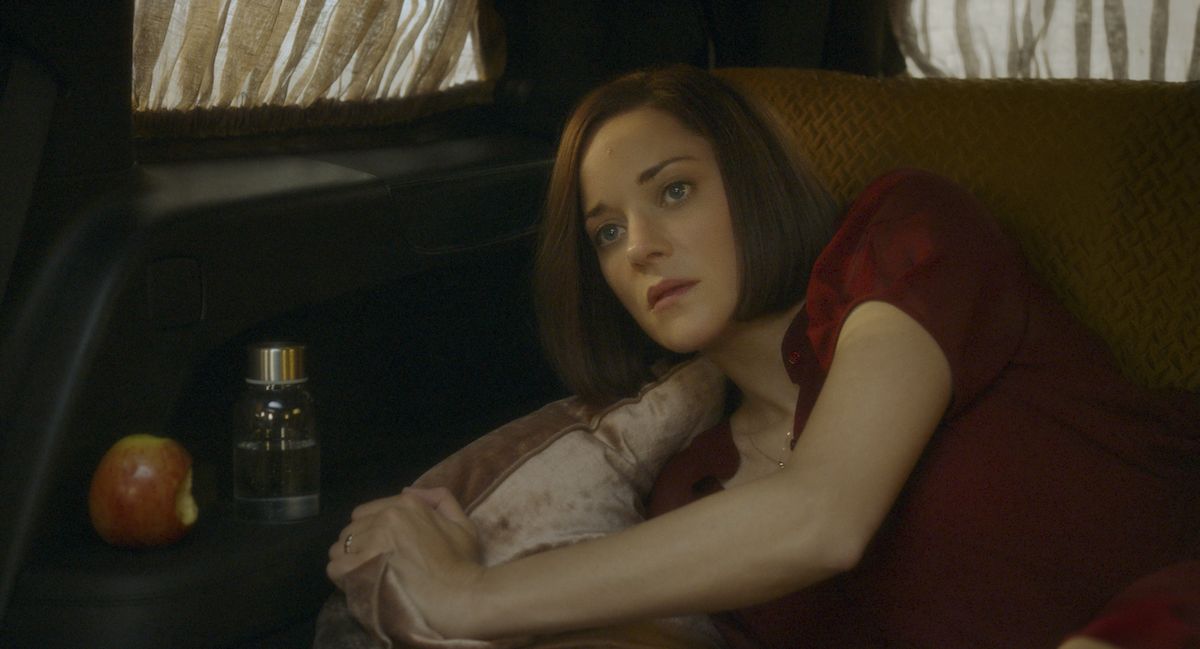
Violent Dreams and Waking Nightmares
There is a short scene in which Ann is riding in a well appointed town car to a performance and she decides to take a nap in the car.
A dream sequence plays out that represents the tip of the unraveling of Henry’s true nature. Encapsulated in a number called “Six Women Have Come Forward,” six women in a choreographed news report sing about abusive relationships they escaped from with Henry. And then, the whole thing is interrupted by Ann waking in the back seat of the town car.
I can only interpret this then as a subconscious fear – a distillation of the anxiety swirling about the Me Too movement in Ann’s psyche – a fear about her husband’s shifting behavior – his decreased empathy, his lost patience with her and their daughter Annette. She is tense and so are we – the fear is tangible and gripping.
Of course, she was right to worry.
Henry’s lurking anger is represented viscerally with an ever-enlarging red mark on his cheek – the mark left behind from angry and anxious scratching. He bloodies his own face in an attempt to contain the unsettling anger and envy he feels within.
Unfortunately for Ann, and everyone in his sphere for that matter, that anger lashes out in violence – he kills Ann and eventually exploits his baby girl Annette, the namesake of the film, for cash and renewed fame.
Ann’s anxious dream leads to total dissolution and surrealism, as mentioned above, the film itself begins to feel like a surreal dream. It’s as though we stepped into another reality, which we hope isn’t true.
Yet, the truth marches on, the story continues to unravel, it sees two murders, an exploitation of a child, and one incredibly toxic and largely unempathetic man in prison. Reality is heightened.
Sidenote: pondering Henry’s murder of The Accompanist, I could argue that, at least in part, that he murdered his rival out of love for Annette. I might be grasping at straws – searching for a redeemable quality in his character, but it could be possible. The Accompanist claims that Annette may actually be his daughter and reveals his affair with Ann, before she and Henry met and quickly wed. Henry perhaps acted out of defense, killing The Accompanist to preserve his fatherhood (or source of income?). Alas, he rightfully loses Annette’s affection in the end.
Perhaps the greatest bombshell and very crux of the film is Henry and Ann’s daughter, depicted as a marionette – used and exploited by both mother and father – for money and revenge. The heightened reality and surrealist technique mystifies and enhances the visual feast that unfolds when Annette enters the picture.
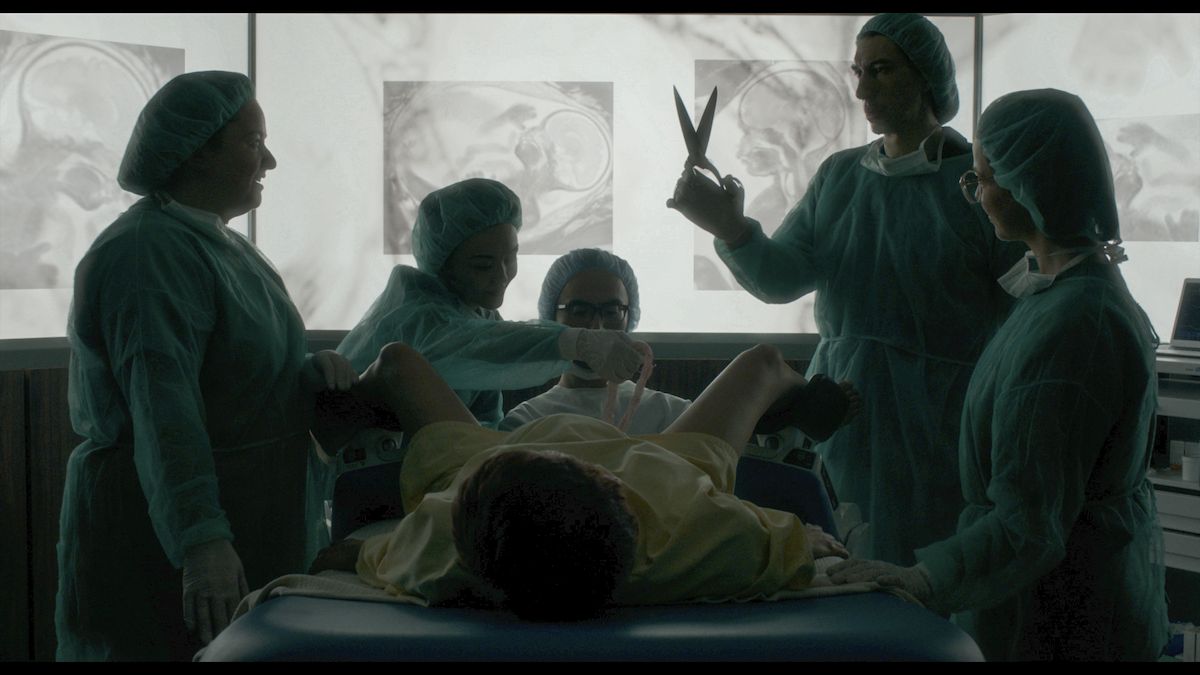
Chase Drummond Ponders the Significance of Baby Annette
In Annette, the marriage between name of character and object is rather straightforward—remove the “mari-“ from marionette and you have, phonetically, Annette. Though a blatant decision, the intricacies of this likeness do not present themselves immediately within the plot. There is no denying that Annette is a marionette, inevitably—until she isn’t.
The choice to use a puppet in place of an actual, human child seems strange at first, humorous even, though that seems to be opposite of what the Mael brothers intended.
A bizarre sight, a newborn represented via puppetry is the amalgamation of musical theatre and zany semantics. It appears, at first, an artistic venture, a gamble of sorts in the way of spectacle rather than anything of genuine substantiation. This, of course, changes upon the visual of Annette’s puppet on the concrete floor of Henry’s prison visiting room, discarded like a plaything or an afterthought, abandoned for some sake that truly only becomes evident upon closer examination of the Maels’ lyrics. Evident too becomes the acumen first questioned.
In “Sympathy for the Abyss”, Annette references not only her father, but her mother as well, when pondering if forgiveness is ever a possibility in her future, or if forgetting will suffice.
At face value, this feels off, as though she is confused, which, given her age and the nature of her upbringing, is excusable.
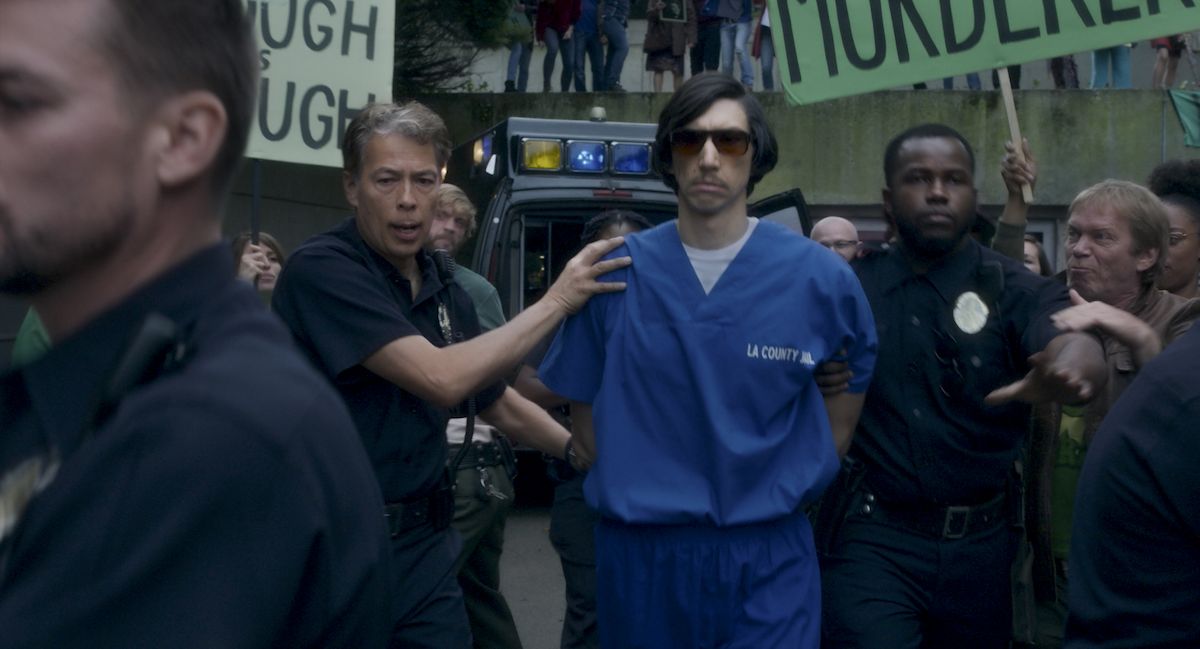
Henry even pleads with Annette not to blame her mother or find fault in her actions, but again Annette shows no hesitation in making clear her adamancy, solidifying as absolute truth that this is not some adolescent misremembering, but a palpable acuity demonstrative of the child’s unusual wisdom—an attribute that becomes more tragic the longer it is dwelt on. At the conclusion of this number—a beautifully cathartic duet between father and daughter—Annette departs the visiting room as a child, having shed the puppet façade in the midst of the song.
The film could have very well never drawn attention to the puppet again, leaving viewers wondering how much of what is seen is influenced primarily by Henry’s own perception—and damaged psyche, for that matter. But we do see the puppet again, as Annette is leaving, on the floor. It is a lifeless heap, no longer the Annette it had been since birth—a symbol, more than anything.
This is where Annette’s blaming of Ann, in addition to Henry, starts to make perfect sense. Her father’s misuse of her is flagrant, inevitably perceived in his manipulation of her vocal abilities for the benefit of his own monetary and social statuses. For him, she truly was an object, something to be positioned or propped up, and made to sing. So how could Annette claim that her mother too is not guiltless in this affair?
Ann did not wave her child in front of crowds or force her to perform; Annette was Ann’s life outside of the limelight, not her connection to it. But in that effect, Annette was manipulated just the same.
She was not a toy, but she was an excuse, at times, and a guarantee, others.
Any time Ann felt threatened or frightened, her immediate response was to rush to Annette or to remind Henry of their child—as though he could somehow forget. It is not until after careful reflection that it becomes undoubtedly clear that this is not for Annette’s benefit, but for Ann’s.
Her daughter is as much a card to play by which her safety is promised and a tangible link to secure her and Henry’s marriage as she is a child to love and dote upon. The most glaring instance of this can be seen when the three are on their yacht in the storm. Ann relies on her daughter’s presence, and draws attention to this several times over, in hopes that it might dissuade Henry from causing her harm.
So why the separation in that final scene? Why go through the trouble of distinguishing that a transformation has not occurred, but a true division?
Simply put, because Annette is no longer that puppet. She is free of both her father and her mother, in literally all aspects.
She has cut all ties and will likely go on to someday forget the parents she knew only for a short while. No longer will she be controlled, and subsequently restricted, by these figures. After all is said and done, and with the tragedies of her infancy behind her, she has her own fate to decide now. There are no strings on her.
Check out Chase’s other articles here!
Moreover to Chase’s Point
To further Chase’s point here, I was mystified for some time about the meaning of Annette’s blaming both her mother and father for her exploitation, which of course leads to the brilliant symbol of the marionette.
It dawned on me that while Henry’s exploitation is rather obvious, Anne’s use of her daughter is also fairly direct. When she passes into the spirit world, she vows to use Annette to haunt Henry for the rest of his miserable days, by giving Annette her singing voice.
Music and Story by Sparks
The original story and music was written by the Mael brothers of the band Sparks. Their work here is remarkable. They’ve penned a surrealist rock opera that is incredibly innovative and hauntingly beautiful.
Whilst the film is billed as a musical, the music spans soaring operatic sequences, pretty little strings of expressive melodies, and all-out rock numbers. This film has it all. Its’ bold, fresh, and brilliant.
I can’t wait for the full album to get a release. The selected tracks on the Cannes Edition will have to do for now.
Annette
Director: Leos Carax
Writers: Ron Mael, Russell Mael
Stars: Adam Driver, Marion Cotillard, Simon Helberg
Images courtesy of Amazon Studios

